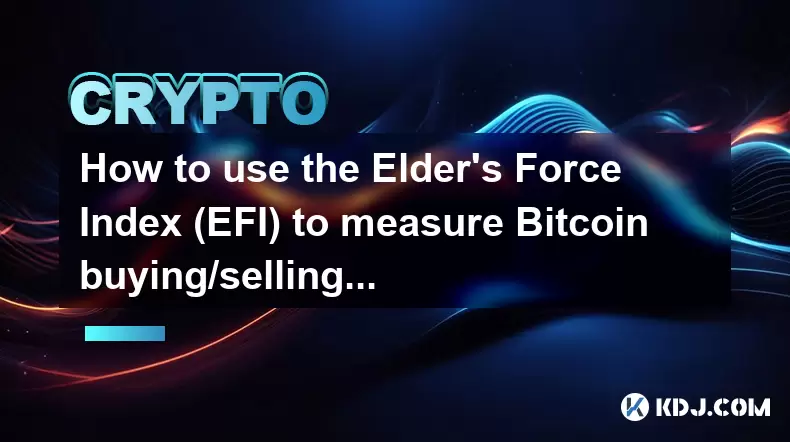-
 Bitcoin
Bitcoin $107,810.8710
-1.45% -
 Ethereum
Ethereum $2,531.4386
-1.75% -
 Tether USDt
Tether USDt $1.0000
-0.03% -
 XRP
XRP $2.2542
-0.99% -
 BNB
BNB $659.1350
-0.50% -
 Solana
Solana $148.5456
-2.40% -
 USDC
USDC $0.9999
-0.02% -
 TRON
TRON $0.2868
-0.44% -
 Dogecoin
Dogecoin $0.1666
-3.65% -
 Cardano
Cardano $0.5751
-2.36% -
 Hyperliquid
Hyperliquid $37.6845
-5.51% -
 Bitcoin Cash
Bitcoin Cash $494.9448
-0.65% -
 Sui
Sui $2.8396
-3.31% -
 Chainlink
Chainlink $13.2423
-2.59% -
 UNUS SED LEO
UNUS SED LEO $9.0482
0.02% -
 Stellar
Stellar $0.2467
-2.44% -
 Avalanche
Avalanche $17.8165
-3.63% -
 Shiba Inu
Shiba Inu $0.0...01158
-2.41% -
 Toncoin
Toncoin $2.7397
-3.42% -
 Hedera
Hedera $0.1560
-2.73% -
 Litecoin
Litecoin $85.8559
-2.34% -
 Monero
Monero $315.3710
-2.30% -
 Dai
Dai $1.0001
0.00% -
 Polkadot
Polkadot $3.3443
-2.03% -
 Ethena USDe
Ethena USDe $1.0001
0.01% -
 Bitget Token
Bitget Token $4.2888
-3.73% -
 Uniswap
Uniswap $7.3388
-1.57% -
 Aave
Aave $278.2986
-3.05% -
 Pepe
Pepe $0.0...09807
-3.67% -
 Pi
Pi $0.4563
-2.39%
What happens if I lose my Bitcoin?
Losing your Bitcoin private keys or seed phrase means permanent loss of access, as there's no recovery option in the decentralized blockchain system.
Jul 08, 2025 at 04:28 am

What happens if I lose my Bitcoin?
Understanding the Nature of Bitcoin Ownership
Bitcoin is not stored in a physical location or controlled by any central authority. Instead, it exists as entries on the blockchain, and ownership is determined by private keys. If you lose your private keys, you effectively lose access to your Bitcoin. Unlike traditional banking systems where lost credentials can be recovered through customer service, Bitcoin recovery is only possible if you have a backup of your private keys or seed phrase.
The decentralized nature of Bitcoin means that there's no "forgot password" option. Once the keys are gone, the associated Bitcoin becomes inaccessible forever. This highlights the importance of secure key management and proper storage solutions.
How Private Keys Work
Each Bitcoin wallet contains one or more private keys, which are essentially long strings of characters used to sign transactions and prove ownership of funds. These keys must remain confidential and secure. If someone else gains access to them, they can steal your Bitcoin. Conversely, losing access to these keys results in permanent loss of funds.
Private keys are typically represented in two forms: the raw hexadecimal format and the Wallet Import Format (WIF), which is shorter and easier to handle. Most wallets abstract this complexity by using mnemonic phrases — a set of 12 or 24 words that represent the private keys. If you lose your mnemonic phrase, there's no way to regenerate it unless you have a backup.
Common Ways People Lose Access to Bitcoin
Several scenarios can lead to the loss of Bitcoin:
- Forgotten passwords or seed phrases: Many users fail to store their recovery information securely.
- Hardware wallet failure: Devices like Trezor or Ledger can malfunction, especially if backups aren't made.
- Lost devices: Phones, computers, or USB drives containing wallet files may be misplaced or stolen.
- Paper wallet damage: Physical copies of private keys can be destroyed by fire, water, or wear and tear.
- Exchange account issues: If an exchange shuts down or blocks access without withdrawal options, funds may be lost.
Each of these situations illustrates why maintaining multiple backups in different formats and locations is crucial for safeguarding digital assets.
Can Lost Bitcoin Be Recovered?
Unfortunately, once Bitcoin is lost due to missing private keys, recovery is impossible. The blockchain does not allow for transaction reversal or key regeneration. There is no central authority to appeal to, and no technical method to regain control of funds without the original keys.
Some people mistakenly believe that law enforcement or cybersecurity experts can help recover lost cryptocurrency. While authorities may assist in cases of theft or fraud, they cannot retrieve funds when the issue stems from user error or mismanagement. Therefore, prevention remains the only viable strategy against irreversible loss.
Steps to Prevent Losing Bitcoin
To avoid losing access to your Bitcoin, follow these best practices:
- Store your mnemonic phrase offline in a secure location.
- Use hardware wallets for long-term storage and enable passphrase protection.
- Keep multiple encrypted backups of wallet files across different physical locations.
- Avoid storing private keys on cloud services or email accounts.
- Regularly test backups by restoring them on a separate device.
For added security, consider using multi-signature wallets that require multiple approvals before transactions can be executed. This adds an extra layer of redundancy and protection against single points of failure.
Frequently Asked Questions
What should I do if I suspect my Bitcoin has been stolen?
Immediately stop using the affected wallet and transfer remaining funds to a new wallet with a fresh private key. Report the theft to relevant platforms and consider contacting local authorities or cybercrime units.
Is it safe to store Bitcoin on an exchange?
Exchanges offer convenience but come with risks such as hacking, insolvency, or sudden closure. For large holdings, it's safer to use cold storage solutions like hardware or paper wallets.
Can I track lost Bitcoin on the blockchain?
Yes, every Bitcoin transaction is publicly visible on the blockchain. However, while you can see where the coins were sent, you cannot reclaim them without the corresponding private keys.
Are there any tools to help recover lost Bitcoin?
No legitimate tools exist that can recover lost Bitcoin. Any service claiming otherwise is likely a scam. Focus instead on securing current assets and creating reliable backups moving forward.
Disclaimer:info@kdj.com
The information provided is not trading advice. kdj.com does not assume any responsibility for any investments made based on the information provided in this article. Cryptocurrencies are highly volatile and it is highly recommended that you invest with caution after thorough research!
If you believe that the content used on this website infringes your copyright, please contact us immediately (info@kdj.com) and we will delete it promptly.
- BlockDAG Leads the Web3 Race with Sports Partnerships and Strategic Pricing
- 2025-07-08 10:50:12
- Pepe, Dogecoin, Shiba Inu: Meme Coin Mania or Calculated Crypto?
- 2025-07-08 10:30:12
- Bitcoin, Ethereum, and Tariff Tussles: Decoding the Crypto Market's Latest Moves
- 2025-07-08 10:30:12
- PEPE, AVAX, Technical Analysis: Riding the Crypto Wave
- 2025-07-08 11:10:12
- BTC Whale's $8.6B Move: Hack, Transfer, or Just a FUD Panic?
- 2025-07-08 11:10:12
- Bitcoin, Treasuries, and the Surge: What's Driving the Market?
- 2025-07-08 11:15:11
Related knowledge

How to identify a volatility contraction pattern on Bitcoin using indicators?
Jul 07,2025 at 07:28am
What is a Volatility Contraction Pattern in Bitcoin Trading?A volatility contraction pattern refers to a phase where the price movement of an asset, such as Bitcoin, becomes increasingly narrow over time. This typically signals that the market is consolidating and may be preparing for a breakout or breakdown. In simpler terms, when volatility contracts,...

What is the Woodies CCI indicator and can it be used for Bitcoin?
Jul 04,2025 at 05:14pm
Understanding the Woodies CCI IndicatorThe Woodies CCI indicator is a variation of the traditional Commodity Channel Index (CCI), which was originally developed by Donald Lambert. The standard CCI measures the current price level relative to an average price over a given period, typically 14. However, the Woodies version modifies this calculation to mak...

How to use indicators to trade the opening range breakout for Bitcoin CME futures?
Jul 05,2025 at 07:35pm
What Is the Opening Range Breakout Strategy?The opening range breakout (ORB) strategy is a popular trading technique used in both traditional markets and cryptocurrency futures, particularly for Bitcoin on the CME. This method involves identifying a specific price range formed during the early phase of a trading session and then taking positions when th...

How to use the Relative Vigor Index (RVI) for Bitcoin trading?
Jul 07,2025 at 02:00pm
Understanding the Relative Vigor Index (RVI)The Relative Vigor Index (RVI) is a technical analysis tool used to assess the strength of price movements in financial markets, including cryptocurrencies like Bitcoin. It operates under the assumption that prices tend to close higher in an uptrend and lower in a downtrend. The RVI compares the closing price ...

What does a bearish cross on the Stochastic RSI mean for Bitcoin?
Jul 05,2025 at 07:18pm
Understanding the Stochastic RSI IndicatorThe Stochastic RSI (Relative Strength Index) is a momentum oscillator used in technical analysis to identify overbought or oversold conditions in an asset's price. It combines two well-known indicators — the RSI and the Stochastic Oscillator — to provide more nuanced signals than either could alone. The Stochast...

How to use the Elder's Force Index (EFI) to measure Bitcoin buying/selling pressure?
Jul 07,2025 at 02:50am
What is the Elder's Force Index (EFI)?The Elder's Force Index (EFI) is a technical indicator developed by Dr. Alexander Elder to measure the power behind price movements in financial markets. It combines both price change and volume to assess buying or selling pressure over a specific period. In the context of Bitcoin trading, EFI helps traders understa...

How to identify a volatility contraction pattern on Bitcoin using indicators?
Jul 07,2025 at 07:28am
What is a Volatility Contraction Pattern in Bitcoin Trading?A volatility contraction pattern refers to a phase where the price movement of an asset, such as Bitcoin, becomes increasingly narrow over time. This typically signals that the market is consolidating and may be preparing for a breakout or breakdown. In simpler terms, when volatility contracts,...

What is the Woodies CCI indicator and can it be used for Bitcoin?
Jul 04,2025 at 05:14pm
Understanding the Woodies CCI IndicatorThe Woodies CCI indicator is a variation of the traditional Commodity Channel Index (CCI), which was originally developed by Donald Lambert. The standard CCI measures the current price level relative to an average price over a given period, typically 14. However, the Woodies version modifies this calculation to mak...

How to use indicators to trade the opening range breakout for Bitcoin CME futures?
Jul 05,2025 at 07:35pm
What Is the Opening Range Breakout Strategy?The opening range breakout (ORB) strategy is a popular trading technique used in both traditional markets and cryptocurrency futures, particularly for Bitcoin on the CME. This method involves identifying a specific price range formed during the early phase of a trading session and then taking positions when th...

How to use the Relative Vigor Index (RVI) for Bitcoin trading?
Jul 07,2025 at 02:00pm
Understanding the Relative Vigor Index (RVI)The Relative Vigor Index (RVI) is a technical analysis tool used to assess the strength of price movements in financial markets, including cryptocurrencies like Bitcoin. It operates under the assumption that prices tend to close higher in an uptrend and lower in a downtrend. The RVI compares the closing price ...

What does a bearish cross on the Stochastic RSI mean for Bitcoin?
Jul 05,2025 at 07:18pm
Understanding the Stochastic RSI IndicatorThe Stochastic RSI (Relative Strength Index) is a momentum oscillator used in technical analysis to identify overbought or oversold conditions in an asset's price. It combines two well-known indicators — the RSI and the Stochastic Oscillator — to provide more nuanced signals than either could alone. The Stochast...

How to use the Elder's Force Index (EFI) to measure Bitcoin buying/selling pressure?
Jul 07,2025 at 02:50am
What is the Elder's Force Index (EFI)?The Elder's Force Index (EFI) is a technical indicator developed by Dr. Alexander Elder to measure the power behind price movements in financial markets. It combines both price change and volume to assess buying or selling pressure over a specific period. In the context of Bitcoin trading, EFI helps traders understa...
See all articles

























































































